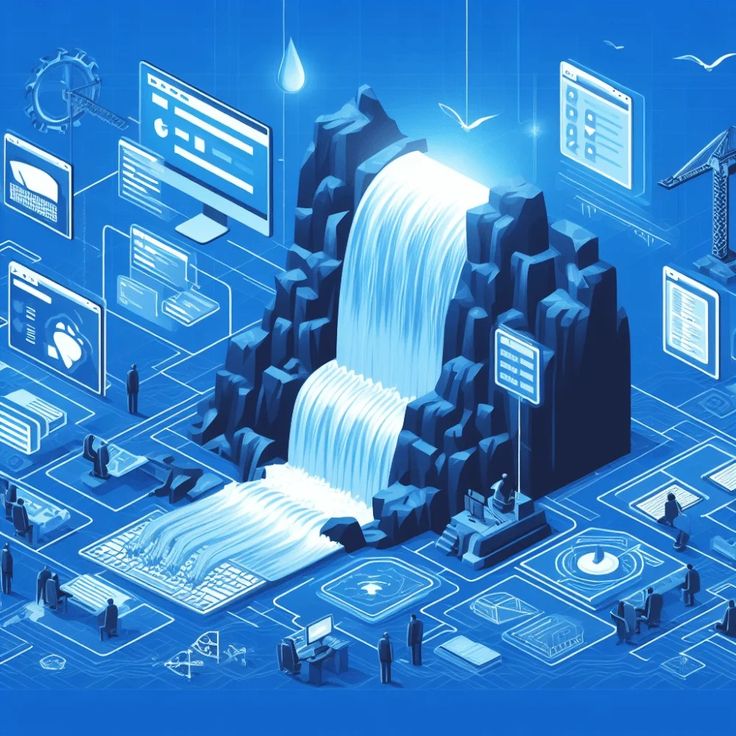In today’s hyper-competitive digital landscape, where attention spans are fleeting and choices are abundant, the success of any product or service hinges not just on its functionality, but profoundly on its User Experience (UX). More than just a slick interface, UX design is the holistic process of crafting interactions that are intuitive, efficient, enjoyable, and meaningful for the user. It’s about deeply understanding human behavior, psychology, and needs, then meticulously designing every touchpoint to create a seamless and delightful journey. This commitment to crafting intuitive futures is no longer a luxury; it’s a strategic imperative, empowering businesses to build lasting connections with their audience, foster loyalty, and ultimately drive digital success in an increasingly crowded world.
Understanding UX: More Than Just Pretty Interfaces
To truly appreciate the depth and breadth of User Experience design, it’s crucial to move beyond superficial aesthetics and delve into its core principles and historical evolution. UX is a multi-faceted discipline, meticulously engineered for human interaction.
A. The Evolution of User Interaction
The way humans interact with technology has undergone a profound transformation, moving from complex, technical interfaces to intuitive, almost invisible experiences.
- Command-Line Interfaces (CLI): Early computing was dominated by CLIs, requiring users to memorize complex commands. This was powerful for experts but highly inaccessible to the general public, prioritizing machine efficiency over human ease of use.
- Graphical User Interfaces (GUI): The advent of GUIs (Windows, icons, menus, pointers) revolutionized computing by introducing visual metaphors. This made computers significantly more approachable and intuitive, paving the way for widespread adoption. This was a crucial step towards thinking about the user.
- Web 1.0: Static Information Browse: Early internet focused on displaying static information. While revolutionary for information access, interactions were largely one-way, with limited user input or personalization.
- Web 2.0: Interactive and Social: The rise of Web 2.0 brought dynamic, interactive, and social platforms. Users became content creators, driving the need for more intuitive forms, feedback mechanisms, and collaborative tools.
- Mobile First and Touch Interfaces: Smartphones and tablets shifted focus to touch-based interactions, demanding responsive designs, concise content, and intuitive gestures. This emphasized immediate gratification and accessibility on the go.
- Ubiquitous Computing: Voice, Gestures, AI: Modern interactions extend to voice assistants (Siri, Alexa), gesture controls, and AI-driven personalization. The interface is becoming less about screens and more about natural human communication, making UX even more critical.
B. Defining User Experience (UX)
UX encompasses all aspects of an end-user’s interaction with a company, its services, and its products. It’s not just about the product itself, but the entire journey a user takes.
- Usability: Can users easily achieve their goals with the product? Is it efficient, learnable, memorable, and error-tolerant? This is the baseline for good UX.
- Accessibility: Can people with diverse abilities (visual, auditory, motor impairments) use the product effectively? Inclusive design ensures a broader reach.
- Utility: Does the product provide actual value to the user? Does it solve a real problem or fulfill a genuine need? A usable product with no utility is pointless.
- Desirability: Is the product aesthetically pleasing, emotionally engaging, and enjoyable to use? Design goes beyond function to evoke positive emotions and build brand affinity.
- Credibility: Does the product and brand inspire trust and confidence in the user? This includes reliability, security, and transparent communication.
- Findability: Can users easily locate the information or features they need within the product? Good navigation and information architecture are crucial.
- Value: Ultimately, does the product deliver value to the user and the business? UX aims to align user needs with business goals for mutual benefit.
UX is a holistic discipline that considers the entire ecosystem surrounding a product, ensuring every interaction point is optimized for human cognition and emotion.
Core Principles of Human-Centered UX Design
At the heart of crafting intuitive futures lies a deeply human-centered approach. Effective UX design is guided by principles that prioritize the user’s needs, behaviors, and cognitive processes above all else.
A. Empathy and User Research
The foundation of all good UX is empathy, a profound understanding of the target users. This is achieved through rigorous user research.
- Understanding Needs: What problems do users face? What are their goals? What motivates them? Research uncovers unspoken needs and pain points.
- Behavioral Observation: Observing users in their natural environment provides insights into how they truly interact with existing solutions, rather than just what they say they do.
- Persona Creation: Developing detailed user personas (fictional representations of target users) helps design teams empathize and make user-centric decisions throughout the development process.
- Journey Mapping: Visualizing the complete user journey, including all touchpoints, emotions, and pain points, allows designers to identify opportunities for improvement and optimize the end-to-end experience.
- Contextual Inquiry: Understanding the environment and circumstances in which users interact with a product is crucial for designing appropriate solutions.
B. Clarity and Simplicity
Good UX strives for clarity and simplicity. Interfaces should be intuitive, easy to understand, and free from unnecessary clutter.
- Reduce Cognitive Load: Minimize the mental effort required for users to understand and interact with the product. Avoid jargon, provide clear instructions, and use familiar metaphors.
- Direct Manipulation: Allow users to directly interact with elements on the screen (e.g., drag-and-drop, touch gestures) rather than relying on abstract commands.
- Consistency: Maintain consistent design patterns, terminology, and interaction behaviors throughout the product. This reduces learning time and builds user familiarity.
- Feedback and Affordances: Provide immediate and clear feedback to user actions (e.g., button states, loading indicators). Use visual cues (affordances) that suggest how an object can be used (e.g., a button looks clickable).
- Progressive Disclosure: Present information and options gradually, revealing more detail only when the user needs it. This prevents overwhelming users with too much information at once.
C. Usability and Efficiency
Beyond being simple, a good UX ensures that users can accomplish their goals efficiently and effectively.
- Task Flow Optimization: Streamline critical task flows, minimizing the number of steps or clicks required to complete an action.
- Error Prevention and Recovery: Design interfaces that prevent users from making common errors. When errors do occur, provide clear, helpful messages and easy ways to recover.
- Flexibility and Customization: Allow experienced users to work more efficiently (e.g., keyboard shortcuts, customizable layouts) while still providing clear guidance for novices.
- Performance Optimization: Ensure the product loads quickly and responds promptly to user input. Even a few seconds of delay can significantly degrade the user experience.
D. Accessibility and Inclusivity
A truly intuitive future is one that is accessible to everyone. Accessibility means designing products that can be used by people with the widest range of abilities and contexts.
- WCAG Compliance: Adhering to Web Content Accessibility Guidelines (WCAG) ensures that digital products are perceivable, operable, understandable, and robust for users with disabilities.
- Diverse User Needs: Consider users with visual impairments (e.g., screen readers, high contrast), auditory impairments (e.g., captions), motor impairments (e.g., keyboard navigation), and cognitive disabilities.
- Universal Design Principles: Designing for a broad range of users from the outset, rather than retrofitting accessibility features, leads to better products for everyone.
- Cultural Sensitivity: Ensure designs are culturally appropriate and avoid metaphors or symbols that might be misinterpreted or offensive in different regions.
E. Iteration and User Testing
UX design is rarely a ‘one-and-done’ process. It’s an iterative cycle driven by continuous feedback.
- Prototyping: Creating low-fidelity to high-fidelity prototypes allows designers to test concepts and flows quickly without fully developing the product.
- User Testing: Observing real users interacting with prototypes or finished products is invaluable for identifying usability issues and pain points that might be missed in internal reviews.
- A/B Testing: For live products, A/B testing allows designers to compare different versions of a feature to see which performs better based on user behavior metrics.
- Analytics and Metrics: Continuously monitoring user behavior through analytics (e.g., conversion rates, bounce rates, time on task) provides quantitative data to inform design improvements.
- Continuous Improvement: UX is an ongoing journey of refinement and optimization based on data, feedback, and evolving user needs.
The Process of Crafting Intuitive Experiences: The UX Design Lifecycle
Effective UX design follows a structured, iterative process that prioritizes user understanding and validation at every stage. While specific methodologies may vary, the core phases remain consistent.
A. Discovery and Research Phase
This initial phase is all about deep immersion into the problem space and the target users.
- Define the Problem: Clearly articulate the problem(s) the product aims to solve. What are the business goals? What are the user needs?
- Stakeholder Interviews: Gather insights from business leaders, product managers, developers, and sales/marketing teams to understand constraints, objectives, and existing knowledge.
- Competitive Analysis: Analyze existing solutions in the market to identify strengths, weaknesses, and opportunities for differentiation.
- User Research: Conduct various research activities:
- Interviews: One-on-one conversations to understand user motivations, pain points, and behaviors.
- Surveys: Collect quantitative data from a larger audience.
- Contextual Observation: Observe users interacting with products in their natural environments.
- Ethnography: Immersive study of users in their cultural context.
- Synthesize Findings: Analyze research data to identify patterns, insights, and key user needs. Create artifacts like user personas, empathy maps, and user journey maps to visualize findings.
B. Ideation and Concept Phase
With a solid understanding of the problem and users, this phase focuses on generating creative solutions.
- Brainstorming: Generate a wide range of ideas, both conventional and unconventional, to address the identified user needs and problems.
- Feature Prioritization: Based on feasibility, impact, and user value, prioritize which features to include in the initial product (Minimum Viable Product – MVP) and future iterations.
- Information Architecture (IA): Organize and structure the content and features of the product in a logical and intuitive way. This involves creating site maps, navigation structures, and content hierarchies.
- User Flows/Task Flows: Map out the specific paths users will take to complete key tasks within the product. This ensures logical progression and identifies potential hurdles.
- Conceptual Design: Develop high-level concepts and ideas for how the solution might look and function, often expressed through sketches or rough wireframes.
C. Design and Prototyping Phase
This is where ideas begin to take tangible form, moving from abstract concepts to interactive representations.
- Wireframing: Create low-fidelity representations of the user interface, focusing on layout, content placement, and functionality, without detailed visual design. These are blueprints of the interface.
- Prototyping: Develop interactive prototypes (ranging from clickable wireframes to high-fidelity mockups) that simulate the user experience. Prototypes allow for early testing and feedback without writing a single line of code.
- Visual Design (UI Design): Apply aesthetic elements such as color palettes, typography, imagery, iconography, and overall branding to create the final look and feel of the interface. This transforms the wireframes into visually appealing and desirable screens.
- Interaction Design (IxD): Define how users interact with the product, including animations, transitions, gestures, and system feedback. This brings the interface to life and guides the user.
- Design System Development: For larger products, establish a comprehensive design system (a library of reusable UI components, patterns, and guidelines) to ensure consistency, scalability, and efficiency in design and development.
D. Testing and Validation Phase
Rigorous testing with actual users is crucial to validate design decisions and identify areas for improvement.
- Usability Testing: Observe real users interacting with prototypes or the live product to identify usability issues, pain points, and opportunities for improvement. This can be moderated (with a facilitator) or unmoderated.
- A/B Testing: For live products, run experiments where different versions of a feature or interface are presented to different user segments to quantitatively determine which performs better based on key metrics (e.g., conversion rates, click-through rates).
- Accessibility Testing: Evaluate the product’s compliance with accessibility standards (e.g., WCAG) to ensure it’s usable by individuals with disabilities.
- Heuristic Evaluation: UX experts review the interface against a set of established usability principles (heuristics) to identify potential problems.
- User Surveys and Feedback: Collect direct feedback from users through surveys, interviews, or in-app feedback mechanisms to understand their satisfaction and suggestions for improvement.
E. Implementation and Continuous Improvement Phase
UX involvement doesn’t end with design handoff; it continues through development and post-launch.
- Design Handoff: Provide detailed specifications, assets, and guidelines to development teams to ensure accurate implementation of the design.
- Collaboration with Development: Work closely with developers to address any implementation challenges, ensure technical feasibility, and maintain design integrity throughout the coding process.
- Launch and Monitoring: After launch, continuously monitor user behavior through analytics, crash reports, and qualitative feedback.
- Iterative Refinement: Use the collected data and feedback to identify areas for improvement. UX design is an ongoing process of iteration, optimization, and adaptation to evolving user needs and market dynamics. This creates a continuous feedback loop for product evolution.
Strategic Impact: Why UX Drives Business Success
In today’s digital economy, investing in superior User Experience is no longer a niche concern for tech companies; it is a critical differentiator and a direct driver of business success across all sectors.
A. Enhanced Customer Satisfaction and Loyalty
At its core, great UX creates a positive, effortless, and enjoyable experience for users.
- Meeting User Expectations: Intuitive designs ensure users can easily accomplish their goals, leading to satisfaction and a sense of accomplishment rather than frustration.
- Emotional Connection: A delightful UX can evoke positive emotions, building a strong emotional connection between the user and the brand.
- Increased Retention: Satisfied users are more likely to return to a product or service, leading to higher customer retention rates and a stronger, more loyal customer base.
- Positive Word-of-Mouth: Users who have a great experience are more likely to recommend the product to others, driving organic growth and reducing marketing costs.
B. Improved Conversion Rates and Revenue Growth
A seamless and intuitive user journey directly impacts business metrics, especially conversion.
- Reduced Friction: Good UX removes obstacles and friction points in critical user flows (e.g., sign-up processes, purchasing paths), making it easier for users to complete desired actions.
- Higher Completion Rates: Clear navigation, logical steps, and helpful feedback lead to higher completion rates for forms, checkouts, and other key tasks.
- Increased Sales: For e-commerce, a superior UX directly translates to more completed purchases, higher average order values, and greater revenue.
- Optimized AdSense & SEO: Intuitive site navigation, engaging content presentation, and faster loading times (all UX factors) improve user engagement metrics (lower bounce rate, higher time on page), which positively influence SEO rankings and potentially increase AdSense revenue by keeping users on the page longer.
C. Reduced Development Costs and Rework
Investing in UX early in the development cycle can significantly reduce overall project costs.
- Early Problem Detection: User research and prototyping identify usability issues and design flaws early on, when they are cheapest to fix. Reworking a design in the ideation phase is far less expensive than fixing a bug in live code.
- Fewer Development Errors: Clear, well-tested UX designs provide developers with precise specifications, reducing ambiguity and the likelihood of costly coding errors or misinterpretations.
- Streamlined Development: A well-defined design system with reusable components accelerates front-end development, ensuring consistency and efficiency.
- Reduced Support Costs: Intuitive products lead to fewer user errors and less confusion, significantly reducing the volume of customer support requests and associated costs.
D. Brand Differentiation and Market Leadership
In crowded markets, exceptional UX can be a powerful differentiator, setting a product apart from competitors.
- Unique Identity: A distinctive and thoughtful UX can create a strong brand identity and memorable experience that resonates with users.
- Competitive Advantage: Products that are genuinely delightful and easy to use gain a significant competitive edge, even if functionally similar to others.
- Innovation Driver: A deep understanding of user needs, fostered by UX research, can uncover unmet needs and inspire genuine innovation, leading to breakthrough products.
- Thought Leadership: Companies consistently delivering superior UX often become industry thought leaders, attracting top talent and further reinforcing their market position.
E. Improved Accessibility and Broader Reach
Designing for accessibility isn’t just a legal or ethical requirement; it’s a strategic business decision that expands market reach.
- Wider Audience: By making products usable by people with disabilities, businesses tap into a larger market segment, potentially unlocking new revenue streams.
- Positive Brand Image: A commitment to inclusive design enhances a company’s reputation as socially responsible and forward-thinking.
- Legal Compliance: Adhering to accessibility standards (e.g., WCAG) helps avoid potential legal challenges and penalties.
- Better UX for All: Many accessibility features (e.g., clear contrast, keyboard navigation, clear language) benefit all users, not just those with disabilities, improving overall usability.
The Future Trajectory of User Experience Design
The field of UX is dynamic, continually evolving in response to new technologies, changing user behaviors, and the increasing complexity of our digital lives. Several key trends are shaping its future trajectory.
A. Hyper-Personalization and Adaptive Interfaces
The future of UX will be defined by hyper-personalization and truly adaptive interfaces. Leveraging AI and machine learning, systems will:
- Understand Individual Users: Analyze user behavior, preferences, context (location, time of day), and even emotional state to dynamically adapt the interface and content.
- Proactive Assistance: Predict user needs and offer relevant assistance before being asked (e.g., a car navigation system automatically suggesting a route based on your calendar).
- Dynamic Content Delivery: Deliver highly relevant and personalized content, notifications, and recommendations in real-time, optimizing engagement.
- Contextual Awareness: Interfaces will become more context-aware, adjusting their presentation and functionality based on the user’s current environment, device, and task.
B. Conversational Interfaces and Natural Language Interaction
The rise of conversational interfaces (CUI) marks a significant shift from graphical interactions to more natural, human-like dialogue.
- Voice User Interfaces (VUIs): Beyond simple commands, VUIs will understand complex queries, engage in multi-turn conversations, and perform sophisticated tasks, becoming ubiquitous in homes, cars, and workplaces.
- Chatbots and Virtual Assistants: More intelligent and empathetic chatbots will handle complex customer service inquiries, provide personalized recommendations, and act as virtual concierters, blurring the lines between human and AI interaction.
- Natural Language Understanding (NLU) and Generation (NLG) Advancements: Continuous improvements in NLU and NLG will enable more fluid, natural, and contextually rich conversations with digital systems, reducing friction.
C. Immersive Experiences: AR, VR, and Spatial Computing
UX design will increasingly move beyond flat screens to create highly immersive and interactive experiences.
- Augmented Reality (AR): Overlaying digital information onto the real world (e.g., smart glasses, phone AR apps) will transform fields like retail (try-on apps), education (interactive learning), and maintenance (digital instructions over physical equipment). UX designers will focus on spatial interaction and information layering.
- Virtual Reality (VR): Fully immersive virtual environments will redefine entertainment, training simulations, collaborative workspaces, and remote experiences, demanding UX designers to create intuitive navigation and interaction within 3D spaces.
- Spatial Computing: The broader concept of interacting with digital content that is anchored in and aware of the real physical world, blending physical and virtual realities. UX designers will sculpt experiences that leverage depth, gestures, and environment.
D. Ethical AI and Responsible Design
As AI becomes more integral to UX, the emphasis on ethical AI and responsible design will intensify.
- Transparency and Explainability: Designing systems that explain why an AI made a particular decision or recommendation, building user trust.
- Bias Mitigation: Actively identifying and mitigating biases in AI models and data to ensure fair and equitable experiences for all users.
- Privacy by Design: Embedding privacy considerations into the core design of products, giving users granular control over their data and transparently communicating how data is used.
- Human Oversight and Control: Ensuring that even highly automated systems have clear points for human intervention, override, and review to prevent unintended consequences.
- Digital Well-being: Designing experiences that promote healthy digital habits, reduce screen addiction, and respect user attention and mental well-being.
E. Low-Code/No-Code Platforms and Citizen Designers
The democratization of design and development tools will empower a new generation of creators.
- Empowering Non-Designers: Low-code/no-code platforms will allow business users and domain experts (citizen developers) to create sophisticated applications and automated workflows without extensive coding or traditional design skills, accelerating innovation.
- Focus on UX Templates and Components: UX designers will play a critical role in creating reusable, accessible, and intuitive templates, components, and design systems for these platforms, ensuring quality at scale.
- Bridging Business and Design: These tools will foster closer collaboration between business strategy and design execution, enabling faster iterations and more direct translation of ideas into functional prototypes.
F. Design for Sustainability and Climate Action
As environmental concerns grow, UX design will play a crucial role in promoting sustainable behaviors and reducing digital carbon footprints.
- Eco-Conscious Design: Designing interfaces that encourage sustainable choices (e.g., low-power modes, nudges for eco-friendly shipping options, visualizing energy consumption).
- Optimizing Digital Footprint: Designing efficient interfaces and backend processes that minimize data transfer, server load, and energy consumption associated with digital products.
- Promoting Circular Economy: UX will guide users towards product repair, recycling, and reuse, supporting a more circular economy model.
Conclusion
User Experience (UX) design is the invisible force shaping our digital interactions, transforming complex technologies into intuitive, delightful, and meaningful engagements. It transcends mere aesthetics, delving into deep user understanding, psychological principles, and meticulous interaction design to craft experiences that resonate emotionally and functionally. In a world saturated with digital offerings, a superior UX is no longer a competitive advantage; it is the fundamental currency of customer satisfaction, loyalty, and commercial success.
The journey of UX is continuous, driven by relentless innovation and an unwavering commitment to the human element. As we look towards a future defined by hyper-personalization, conversational AI, immersive realities, and increasingly autonomous systems, the role of the UX designer becomes even more critical. They are the empathetic navigators, the architects of seamless journeys, and the visionaries who ensure that technological progress genuinely serves human needs. By meticulously crafting intuitive futures, UX empowers businesses to not only build compelling products but also to forge lasting connections with their audience, ensuring that the digital world we inhabit is truly designed for humanity.










